This year’s winners of the Society for Information Display’s Honors and
Awards include Dr. Isamu Akasaki, who will receive the Karl Ferdinand
Braun Prize for his seminal contributions to the development of high-quality
single-crystal GaN-based semiconductors and their PN-junction blue LEDs and
lasers; Dr. Marc Baldo, who will receive the Jan Rajchman Prize for his
outstanding contributions to the discovery of phosphorescent-OLED devices;
Dr. Hoi-Sing Kwok, who will be awarded the Slottow-Owaki Prize for providing
education and training in display technology to many students and professionals
in the Asia region through the creation of a display research center; and Dr.
Shigeo Mikoshiba, who will receive the Lewis & Beatrice Winner Award for his
sustained exceptional contributions to SID for over 30 years.
by Jenny Donelan
THE RECIPIENTS of the Society for Information Display’s 2013 Honors and
Awards may be diverse in terms of the display technologies they pursue – GaN-based
semiconductors, phosphorescent OLEDs, LCDs, PDPs – and in geographical location
– Japan, Massachusetts, Hong Kong – but they have at least two things in common:
vision and a clear sense of purpose. As a young researcher in Tokyo, Isamu
Akasaki became intrigued by gallium nitride’s potential for blue-light emitters,
despite the fact that the technology was considered yesterday’s news by many
scientists — another promising piece of research that had not worked out. Akasaki
saw something more in the material – specifically, he saw tiny, well-formed
crystallites – but he also saw that it might someday contribute to display
systems in a major way. After years of hard work, he, and the rest of the
world, discovered he was right.
Another young researcher, Marc Baldo, then a graduate student at Princeton,
fell under a spell after he built his first OLED in the lab. The deep red color
of the OLED he made both surprised and entranced him. He continued to focus on
OLEDs and went on to contribute to the development of the first phosphorescent
OLEDs.
Slottow–Owaki Prize recipient Hoi-Sing Kwok and Lewis & Beatrice Winner Award
recipient Shigeo Mikoshiba are both highly respected scientists, but their
awards from SID this year reflect their vision for education and community-based
efforts. Kwok saw the need for a display-based research center in Hong Kong and
went on to create it, which included raising the all-important funds.
Mikoshiba, a busy educator and researcher, recognized the importance of
volunteering his time to the display industry, and devoted many efforts to the
furthering of SID. His vision and continued sense of purpose – he has
volunteered continuously for more than 30 years — raised up not only SID, but
the industry as a whole. Besides, as he told Information Display, such
efforts are ultimately as enriching to the volunteer as to those he helps.
The SID Board of Directors, based on recommendations made by the Honors &
Awards Committee, grants these annual awards based upon outstanding achievements
and significant contributions to the display industry. This year’s winners
should take pride in this acknowledgment of their tremendous accomplishments.
The 2013 award winners
will be honored at the SID Honors & Awards Banquet, which will take
place Monday evening, May 20, 2013, during Display Week at the Vancouver
Convention Centre. Tickets cost $75 and must be purchased in advance –
tickets will not be available on-site.
Visit
www.displayweek.org for more information. |
Karl Ferdinand Braun Prize
This award is presented for an outstanding technical achievement in, or
contribution to, display technology.

Dr. Isamu Akasaki, Professor at Meijo University, will receive
the Karl Ferdinand Braun Prize “for his seminal contributions to the development
of high-quality single-crystal GaN-based semiconductors and their PN-junction
blue LEDs and lasers.”
In 1969, researchers succeeded in growing single-crystal gallium nitride on a
sapphire substrate. Two years later, the first blue LED with an MIS structure
was created. These advances prompted excitement about the development of GaN-based
blue-light emitters, but just several years later, most gallium-nitride
researchers had withdrawn from the field. They could neither grow
electronic-grade high-quality GaN single crystals nor control their electrical
conductivity. Both features were key to the development of high-performance
blue-light emitters and high-power high-speed transistors.
About that time, an engineer named Isamu Akasaki, then working at Matsushita
Research Institute Tokyo (MRIT), became intrigued by GaN’s potential for use in
blue-light emitters. With the idea in mind that electronic devices and the
materials used to make them must be robust, he thought GaN could be the best
candidate since it is very stable physically and chemically, even though it was
difficult to form high-quality crystals with it.
Said Akasaki, “I realized the great potential of GaN as a blue luminescent
material when I found tiny yet high-quality crystallites embedded in HVPE-grown
crystals containing many cracks and pits. I was intuitively convinced that
conductivity control could be achieved if this kind of quality could be made
over an entire wafer.”
His eventual success with GaN-based semiconductors ultimately contributed to
display systems ranging from traffic lights to cell phones, to high-resolution
TVs, digital signage, and more. “Akasaki transferred these basic technologies
to industry and made fundamental contributions to information-display
technology,” says Yasushi Nanishi, a Professor at Seoul National University.
It is one thing to pursue a brilliant idea, but it is another to pursue it
and eventually succeed after others have dismissed it. “That a single
scientist’s determination and dedication overcame a barrier that researchers
throughout the world had become resigned to, and the impact of the multiple
applications derived from this achievement, make this a truly great invention,”
says colleague Maseo Ikeda.
Akasaki received his undergraduate degree from Kyoto University and doctoral
degree from Nagoya University. In 1952, he joined Kobe Kogyo Corp. (now,
Fujitsu, Ltd.). In 1959, he moved to Nagoya University, where he worked as a
research associate and an associate professor. In 1964, he became Head of the
Basic Research Laboratory IV and General Manager of the Semiconductor
Department, both at MRIT. He returned to Nagoya University in 1981. Akasaki
has authored and/or co-authored more than 700 international journal/conference
papers and 30 book chapters and has been awarded 123 Japanese patents (including
110 patents related to group III nitrides) and 90 foreign patents related to
nitrides.
Jan Rajchman Prize
This award is presented for an outstanding scientific or technical
achievement in, or contribution to, research on flat-panel displays.

Marc Baldo, SID member and Professor at the Massachusetts
Institute of Technology, will receive the Jan Rajchman Prize “for his
outstanding contributions to the discovery of phosphorescent-OLED devices.”
While a graduate student at Princeton, Marc Baldo helped develop
phosphorescent OLEDs. Prior to this development, all OLEDs were fluorescent,
but fluorescence harnesses only spin 0, or singlet, excitons. Since singlets
represent only 25% of the total number of excitons generated by electrical
excitation, successful exploitation of the remaining 75% promised to increase
OLED efficiencies by a factor of 4.
According to Russell Holmes, Associate Professor with the Department of
Chemical Engineering and Materials Science at the University of Minnesota, “This
work by Marc (and co-workers in the groups of Professors Stephen Forrest and
Mark Thompson) permitted an immediate quadrupling in the efficiency of these
devices by harvesting typically dark triplet exciton states. This work,
published in Nature in 1998, represented a key enabling step for the
development of an OLED-display industry and sparked an explosion of research
into highly efficient phosphorescent emitters.”
The materials and structures Baldo worked on were later commercialized by
Universal Display Corp. Phosphorescent materials are now found in many
commercial products, especially cell-phone displays.
Baldo received his bachelor of engineering degree from the University of
Sydney and his Ph.D. from Princeton University. When asked what led him to his
chosen field, he says, “I was very interested in the novelty of building devices
based on molecules. I liked the idea of designing materials and devices atom by
atom. I found that it was possible to make a device in an afternoon. It was an
exciting time. When I built my first OLED, I remember the shock of the
beautiful deep red color. I was hooked.”
OLEDs have been the “next big thing” for a long time, and while each year
brings progress in terms of commercial devices, that progress has been slower
than initially surmised by many enthusiasts. Baldo says, “The challenge for
OLEDs has been that they are an entirely new technology, unlike any previous
semiconductor device or display technology. Consequently, the industry has not
been able to draw on many existing technologies. From the devices themselves,
to the packaging, to the manufacturing process, to the backplanes that drive the
displays, everything has had to be developed specifically for OLEDs. Even
today, with devices that are stable and efficient, we are still working on the
manufacturing process. I think the advantages of OLEDs will make it all
worthwhile, but it has been a lot of work. We still do not know all that is
possible with OLEDs.”
Slottow–Owaki Prize
The Slottow–Owaki Prize is awarded for outstanding contributions to the
education and training of students and professionals in the field of information
displays.
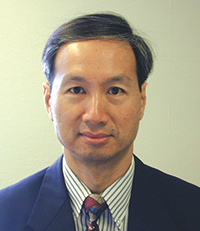
Dr. Hoi-Sing Kwok, SID fellow and Professor at Hong Kong
University of Science and Technology, will be awarded the Slottow–Owaki Prize,
“for providing education and training in display technology to many students and
professionals in the Asia region through the creation of a display research
center.”
Dr. Hoi-Sing Kwok established the Center for Display Research (CDR) at the
Hong Kong University of Science and Technology in 1995. Many scientific
institutions have a specific program of research in semiconductors, he explains,
but not many have programs for displays. “Yet, displays are a large market that
is one-third to one-half that of semiconductors,” he says. “There are a lot of
opportunities in display research.” Initially, Kwok was able to convince the
government to provide about US$2 million to start CDR.
CDR has since evolved to become a center of excellence in display research,
generating many noteworthy research results and training numerous doctoral and
postdoctoral students for work in the display industry. Kwok and his students
have also produced significant intellectual properties in these research fields,
obtaining 65 U.S. and Chinese patents thus far.
“Professor Kwok is an anchor of the display community in the Hong Kong,
Taiwan, and China regions,” says Ching Tang, Doris Johns Cherry Professor of
Chemical Engineering at the University of Rochester. “He has contributed to a
wide range of display technologies, from LCOS to OLED, and from creating new
device architectures to advancing display-manufacturing processes. The direct
impact is that a large group of professionals of diverse skills from his
research group are now making their own contributions in both academics and the
display industries.”
Former student Dr. Haiying Chen of APT Electronics writes, “Fourteen years
ago, I joined Prof. Kwok’s group as a Ph.D candidate. That was a big challenge
for me, a graduate with materials science and engineering background only.
Prof. Kwok was very nice and patient. He gave me enough space and freedom to
learn, to think, to plan, and to try. I benefited quite a lot during the
four-year study and research under Prof. Kwok, especially in learning how to
think and to work independently.”
Throughout his professional career, Kwok has supervised 42 Ph.D.
dissertations, 20 master’s theses, and 80 B.S. senior projects. He has
co-authored one book, “Photoalignment of Liquid Crystalline Materials: Physics
and Applications (Wiley/SID series),” and over 380 journal papers.
His greatest satisfaction as a teacher? “To see the students grow and
contribute to the industry. And sometimes to see them becoming more
knowledgeable than I and teaching me back.”
Lewis & Beatrice Winner Award
The Lewis & Beatrice Winner Award for Distinguished Service is awarded to
a Society member for exceptional and sustained service to SID.
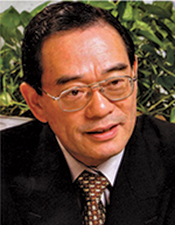
Dr. Shigeo Mikoshiba, SID Life Fellow, Jan Rajchman Prize
winner, and Professor Emeritus at The University of Electro-Communications in
Tokyo, Japan, will receive the Lewis & Beatrice Winner Award “for his sustained
exceptional contributions to SID for over 30 years.”
Dr. Shigeo Mikoshiba is a life-long researcher, educator, and gifted
scientist who received SID’s Jan Rajchman Prize in 2007 for contributions to
PDP and LCD backlighting technology. Yet he has also through the years found
time to serve and promote the Society for Information Display. He joined SID in
1975, and since 1981 has continuously served SID, its Japan Chapter, Japan
Display, and IDW. He has been President and Secretary of SID, as well as chair
and member of countless committees. He has also served as an associate editor
for both the Journal of the SID and Information Display.
“I have known and worked with Prof. Mikoshiba for a great many years,” says
SID member Alan Sobel. “He has worked tirelessly and indefatigably for SID in a
number of capacities.”
Mikoshiba says it has not always been easy to find the time to volunteer,
especially while balancing university research, education, and administrative
duties (not to mention family obligations). “Nevertheless, I enjoyed my
volunteer activities very much,” he says. Through these volunteer activities,
Mikoshiba says he got to know many people who were helpful not only in terms of
those activities but for his research work. Last but not least, volunteer work
enriches one’s personality, says Mikoshiba.
Mikoshiba earned his bachelor’s and master’s degrees in plasma physics at the
Tokyo Institute of Technology. His doctoral degree, also in plasma physics, is
from the University of Alberta. Mikoshiba says he became interested in display
technology while working for Hitachi starting in 1973, at about the time that
PDPs, LCDs, and FEDs were all emerging. •
2013 SID Fellow Awards
The grade of fellow is conferred annually upon SID members of outstanding
qualifications and experience as scientists or engineers whose significant
contributions to the field of information display have been widely recognized.
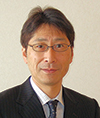
Hiroyuki Mori, “For his significant
contributions to the development of optical films for liquid-crystal displays
including TN and OCB modes.” Dr. Mori received his B.S. and M.S. degrees in
applied physics from the University of Tokyo and his Ph.D. from the Liquid
Crystal Institute at Kent State University.
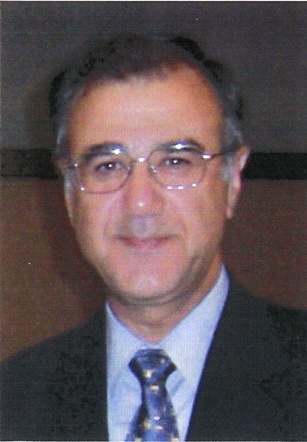
Kälil Käläntär, “For his many contributions to the science and
technology of liquid-crystal-display backlights, including light guides, optical
micro-reflectors, and light-shaping devices. Dr. Käläntär is a senior
scientist at Global Optical Solutions. He has Ph.Ds in Optics from Toyohashi
University of Technology and Tohoku University.
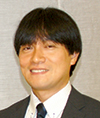
Takatoshi Tsujimura, “For his contributions to the development of
AMOLED displays and and OLED lighting.” Mr. Tsujimura is General Manager
and OLED Division Head for Konica Minolta, Inc. He has a degree from Tokyo
University.

Baoping Wang, “For his many contributions to the development of
field-emission displays and the shadow-mask plasma display panel.” Dr. Wang
is a Professor of Electronics at Southeast University. He received his Ph.D. in
electronic engineering from Southeast University.

Gopalan (Raj) Rajeswaran, “For his pioneering contributions to the
development, manufacture, and commercialization of AMOLED displays. Dr.
Rajeswaran is Chief Executive Officer with Moser Baer Technologies. He earned
his Ph.D. in electrical engineering from SUNY Buffalo.
2013 SID Special Recognition
Awards
Presented to members of the technical, scientific, and business community
(not necessarily SID members) for distinguished and valued contributions to the
information-display field.
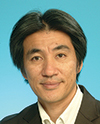
Keiji Ishii, “For outstanding contributions to the development of the
145-in.-diagonal super-high-vision (8K x 4K) plasma display panel.” Mr.
Ishii is a Senior Research Engineer with the Display & Functional Devices
Research Division, Science & Technology Research Laboratories, at Japan
Broadcasting Corporation (NHK). He received his B. E. and M. E. degrees in
electrical engineering from Saga University.

Ryuichi Murai, “For outstanding contributions to the development of
the 145-in.-diagonal super-high-vision (8K x 4K) plasma display panel.” Mr.
Murai is a researcher at Panasonic Corp. He received his B.E. and M.E. degrees
in electronic engineering from Osaka University.

In-Byeong Kang, “For his leading contributions to the development of
manufacturable film-patterned-retarder 3D displays and in-plane-switching-based
liquid-crystal panels.” Dr. Kang is Senior Vice President and Head of the
LG Display Laboratory at LG Display Co. He earned his Ph.D. in electronic
engineering from the University of South Australia.

Isao Kawahara, “For his contributions to the research and development
of the moving-picture-resolution metric for display panels.” Mr. Kawahara
has retired as a senior manager for image quality at Panasonic Corp. He
received his M.E. degree in electric engineering from Kyoto University.

Qun (Frank) Yan, “For the development of the calcium-magnesium-oxide
protective layer for high-luminous-efficacy plasma display panels.” Dr. Yan
is Chief Scientist of the plasma display panel (PDP) business unit within
Changhong Electronics Group. He holds a Ph.D. in physics from Vanderbilt
University.

Takehiro Zukawa, “For the development of the calcium-magnesium-oxide
protective layer for high-luminous-efficacy plasma display panels.” Mr.
Zukawa is a Staff Engineer with Panasonic Plasma Display Corp., Ltd. He
received his M.S. degree in engineering from Toyama University.

Hidefumi Yoshida, “For his significant contributions to the science
and technology of liquid-crystal displays, including the multi-domain
vertical-alignment mode.” Dr. Yoshida is a Chief Technical Research Fellow
with Sharp Corp. He has a Ph.D. in engineering from Tokyo Institute of
Technology.
The Society for
Information Display is indebted to the following companies, who each
donated $2000 to sponsor a prize:
Braun Prize — AU Optronics Corp.
Rajchman Prize — Sharp Corp.
Slottow-Owaki Prize — Fujitsu, Ltd., and Dr. Tsutae Shinoda |
Jenny Donelan is the Managing Editor
of Information Display
Magazine. She can be reached at
jdonelan@pcm411.com.